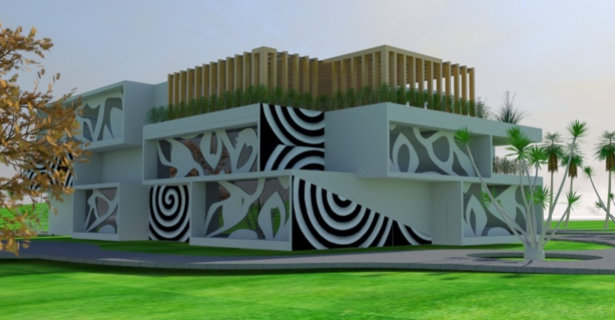You might be wondering what is the link between architecture and human rights? For organizations like Genesis and Gilgal Group (G&G), architecture is intrinsically tied to humanity. The ultimate goal of their designs is that human rights become an architect’s powerful tool for better urban planning and construction. I believe architecture is revolutionary because it can reinvent the way we live and co-exist.
During my second month at G&G Group, the aim was to exercise the good practice of architecture through concept and design. My assignment was to create a recreational space for the Western province. I loved this challenge because it gave me an opportunity to understand more about the connection between architecture and humanity. My project proposal was designing a youth center that had a library, art studios, and an art gallery. The aspects I considered when designing this complex included the promotion of national culture, the use of green/natural energy, and the connection between people and nature.
Architecture is a piece of art that is flexible enough to make a contribution to cultural preservation through design. In this design, I used ‘Imigongo’, which is a famous Rwandan art form . The complex also would have large, glazing curtain walls, to let natural light inside the building and to allow people to have a wide view of nature outside. During the day, the sun would be the main source of light in the building, thus, this design concept can also help to reduce the cost of electricity.
The reason for choosing the youth center as my project is because there is a scarcity of centers that empower education and knowledge for young Rwandans. Through architecture, knowledge can be spread, culture can be preserved, and sustainability can be enforced.
The role architecture plays in promoting human’s rights is not straightforward. Most of the people, particularly in Rwanda, take architecture to be a practice of designing and constructing buildings, which has no bearing at all on human rights/humanity. I believe that what architects design are interconnections between the two entities. Cities, buildings, etc. are designed for people, and they impact how they relate and live with each other. When you mindfully build a place, then the architecture is no longer a ‘me’ space but rather an ‘us’ space, because it brings people together and encourages communalism.

